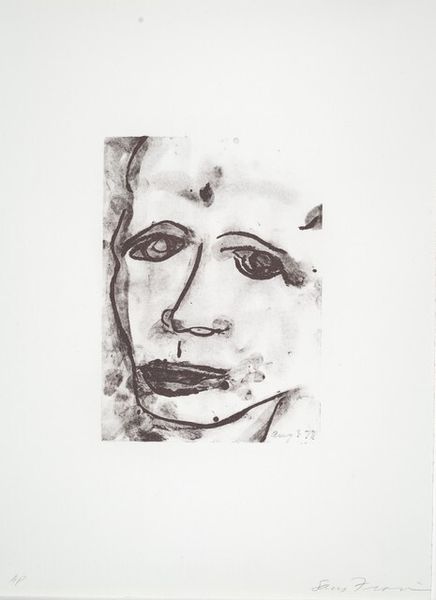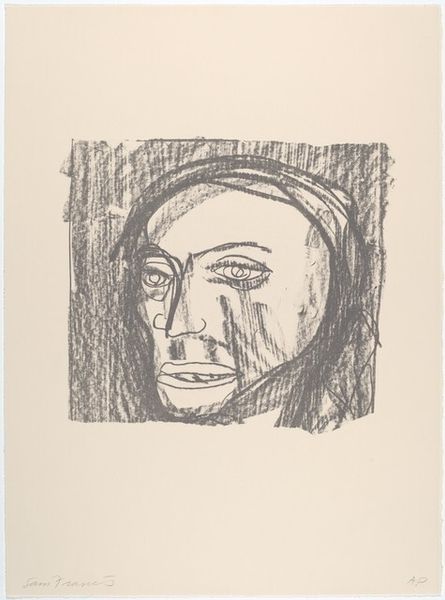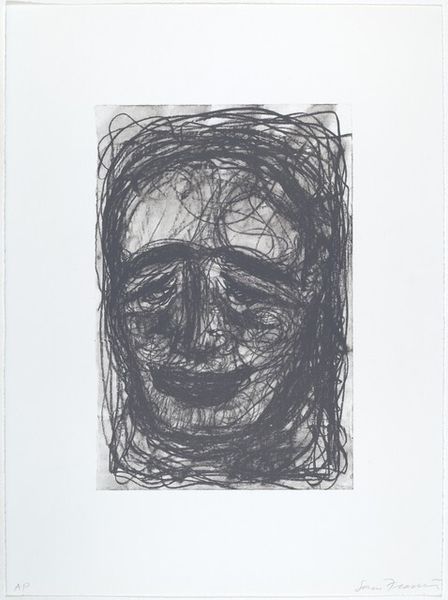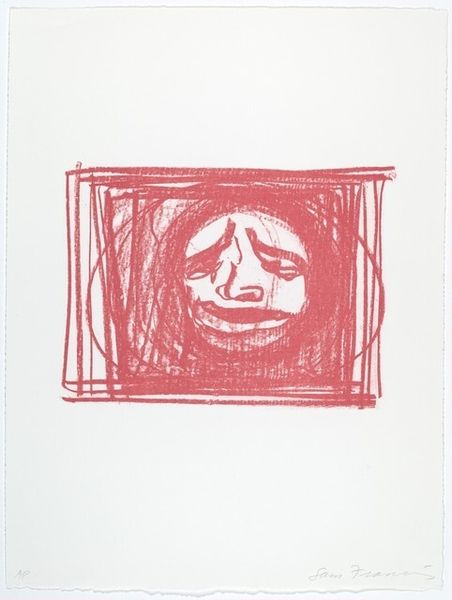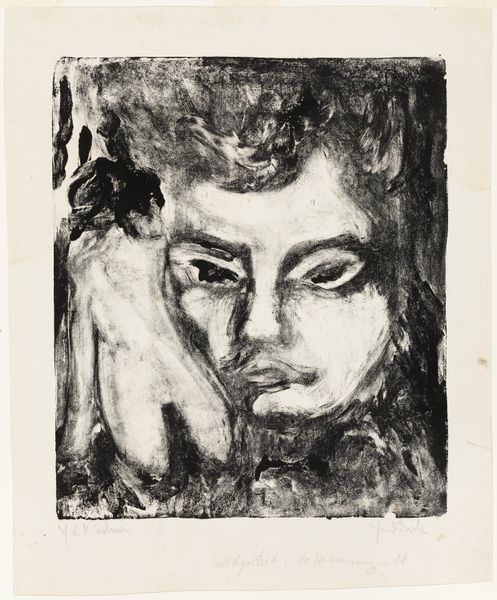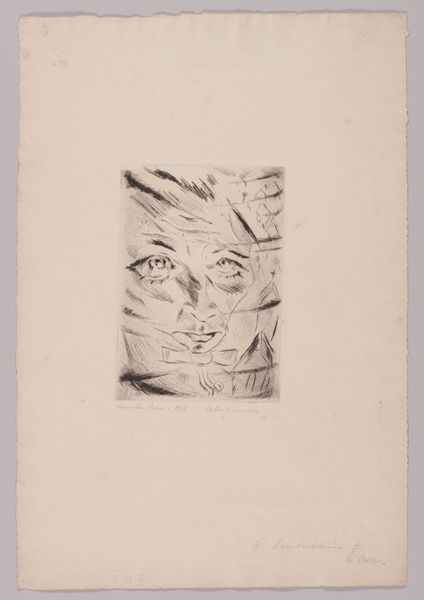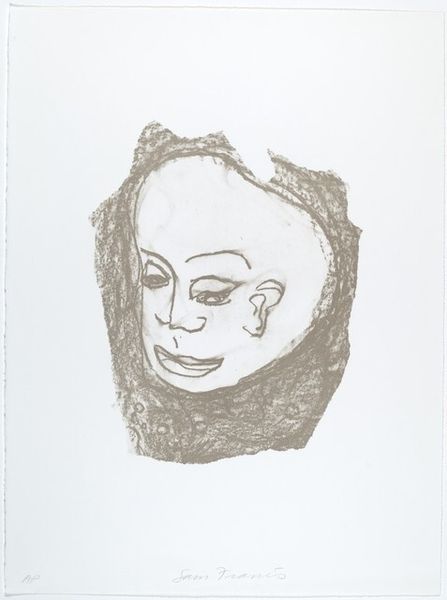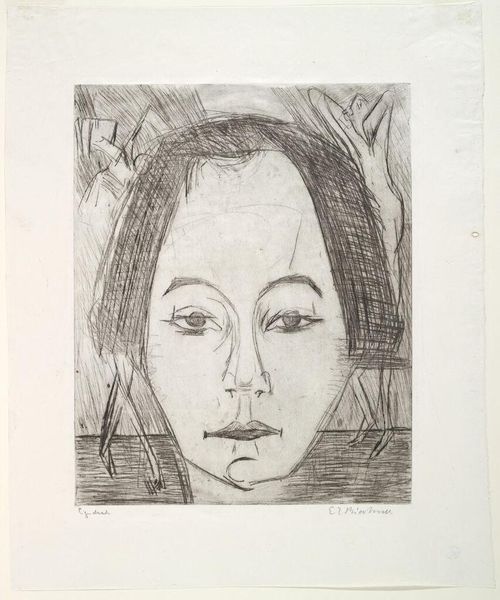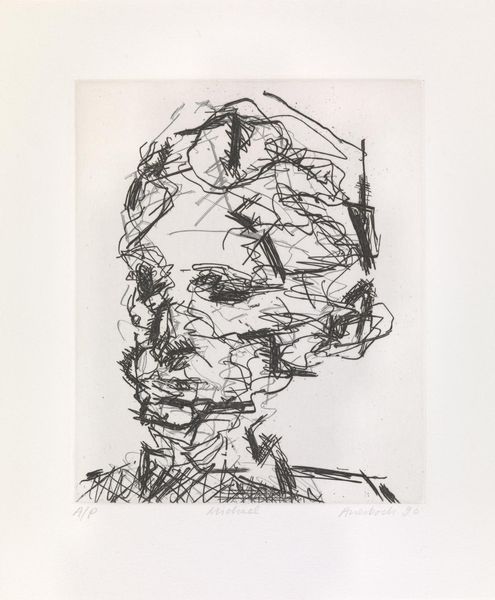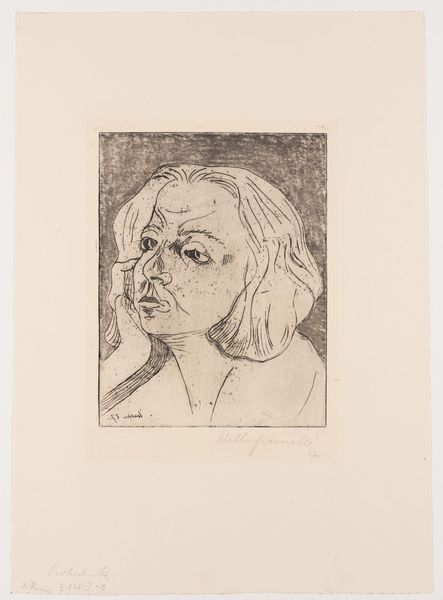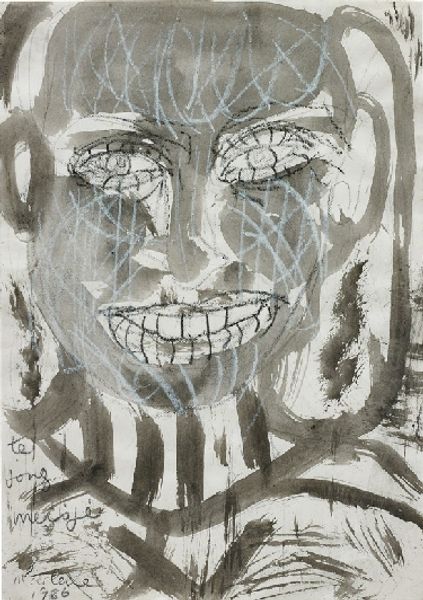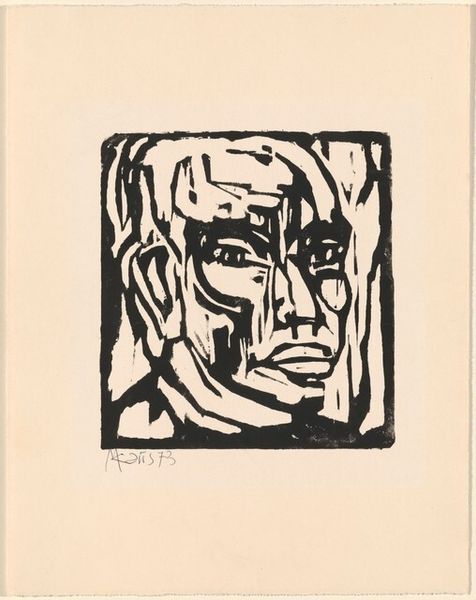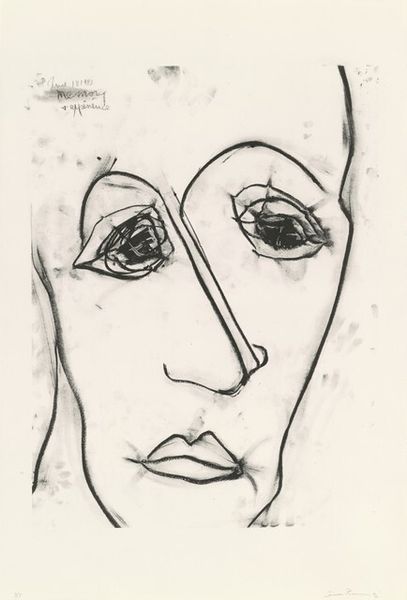
Dimensions: image: 19.9 x 16.4 cm (7 13/16 x 6 7/16 in.) sheet: 44.2 x 34.7 cm (17 3/8 x 13 11/16 in.)
Copyright: National Gallery of Art: CC0 1.0
Editor: This is Sam Francis's "Self-Portrait" from 1974, an ink print. It’s strikingly raw and immediate. What symbols do you see at play here? Curator: Well, the fragmentation, for one. The face isn't presented as a unified whole but as broken pieces, particularly noticeable by the sharp crack cutting down the forehead and eye. This can symbolize a fractured sense of self, a mind divided. Editor: So you’re saying the artist is using the image of a broken face to show inner turmoil? Curator: Precisely. Think about the tradition of portraiture. It usually aims to capture a stable, recognizable identity. Francis disrupts that expectation, and through that act of artistic desecration conveys emotional disruption. Consider also, where does this fracture bisect the face? What are the psychological ramifications of that placement? Editor: I see what you mean! It's going right through the eye, which has been culturally associated with visionary capability and clarity, bisecting the rational with the emotional. But I wonder, do all of his works incorporate similar kinds of broken iconography? Curator: Not explicitly "broken," but Francis repeatedly uses biomorphic, cell-like forms and intense color juxtapositions, which might indirectly connote a dynamic tension. So, although each work is distinct, this fragmented visual language persists, evolving within his larger artistic journey. How does that add nuance to the self-portrait? Editor: I think it’s less about a momentary break and more about understanding the breaking, and repairing, and fluctuating as inherent to identity, as time marches on. Curator: Yes, it's like seeing not just *a* self, but the process of *selfing*. Intriguing, isn’t it?
Comments
No comments
Be the first to comment and join the conversation on the ultimate creative platform.

